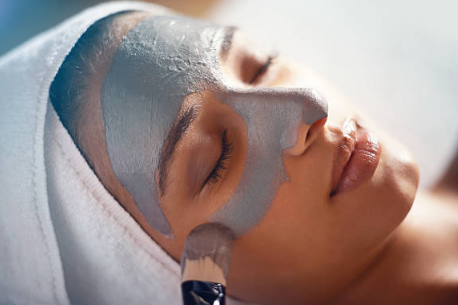If you’re stuck in a cycle of dry, tight skin, you’ve come to the right place. Whether the dry climate or cold months worsen your complexion—or your skin has always leaned this way—dry skin often feels like a tight, dehydrated mask covering your complexion. But the right skincare routine can reveal the hydrated, glowing skin beneath. Read on for expert steps, key ingredients, and ingredients to avoid.
What Is Dry Skin?
Dry skin means your skin isn’t effectively retaining moisture to shield itself from environmental stressors. When it’s dry, the outer layer develops tiny cracks, impairing its natural hydration abilities. That’s why a thoughtful morning routine is essential to prep dry skin for the day ahead.

Key Ingredients for Dry Skin
Look for moisturizers containing:
-
Emollients: Help smooth and soften. Think petroleum jelly, shea butter, and cocoa butter.
-
Occlusives: Form a barrier to lock in moisture. Options include beeswax, argan oil, jojoba oil, and mineral oil.
-
Humectants: Attract water from the air or deeper skin layers. Top picks: hyaluronic acid and glycerin.
Morning Routine
-
Non-Foaming Cleanser
Use a gentle, hydrating cleanser to wash away dirt and oil without stripping your skin. -
Vitamin C Serum
After cleansing, apply Vitamin C serum to elevate hydration and support skin barrier function. -
Moisturizer
If your SPF moisturizer provides enough hydration, that works too. If your skin is very dry, apply a hydrating moisturizer first, followed by SPF. -
Sunscreen
Essential every day—even on cloudy days. Look for SPF 30+ and reapply every two hours. For dry skin, hydrating sunscreen or a moisturizer-and-SPF combo is ideal.
Evening Routine
-
Cleansing Balm or Micellar Water
Start with this to remove makeup and sunscreen. -
Hydrating Cleanser
Follow up to cleanse deeply without drying out your skin. Avoid retinoids like retinol or tretinoin if your skin is very dry. -
Targeted Treatment (if needed)
For acne treatments like retinol or benzoyl peroxide, wait 20 minutes after cleansing before applying to minimize irritation. -
Hydrating Serum
Applying a serum with hyaluronic acid after retinol can help replenish moisture. For best results, lightly mist your face with water before serum application. -
Moisturizer
Choose a rich cream—not just a lotion—as your skin repairs itself overnight. -
(Optional) Facial Oil
If your skin tolerates it (non-comedogenic oils best), apply oil over moisturizer to seal in hydration. Skip this step if you’re acne-prone.
Bonus Tips for Dry Skin
-
Avoid hot water: Stick to lukewarm water when cleansing and showering. Hot water strips natural oils.
-
Apply moisturizer to damp skin: This helps lock in hydration more effectively.
-
Use a hydrating mask weekly: Gives your skin an extra hydration boost.
-
Ease into retinol: Start with 1–2 times a week, build up gradually. The “retinol sandwich” method (moisturizer–retinol–moisturizer) can help reduce irritation, though it may slightly reduce retinol’s potency. Or apply retinol to completely dry skin (after waiting 20 minutes post-cleansing).
-
Avoid alcohol-containing products: They further dry out the skin. Astringents like witch hazel are also best avoided.